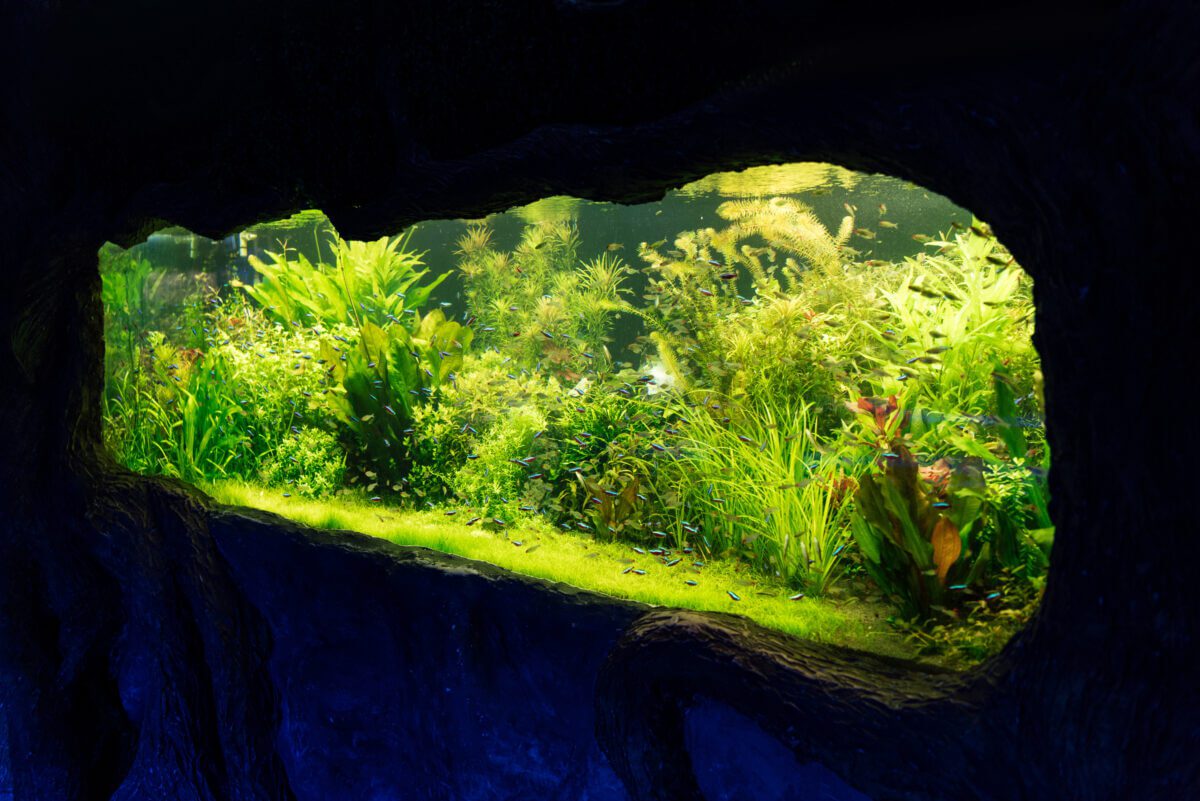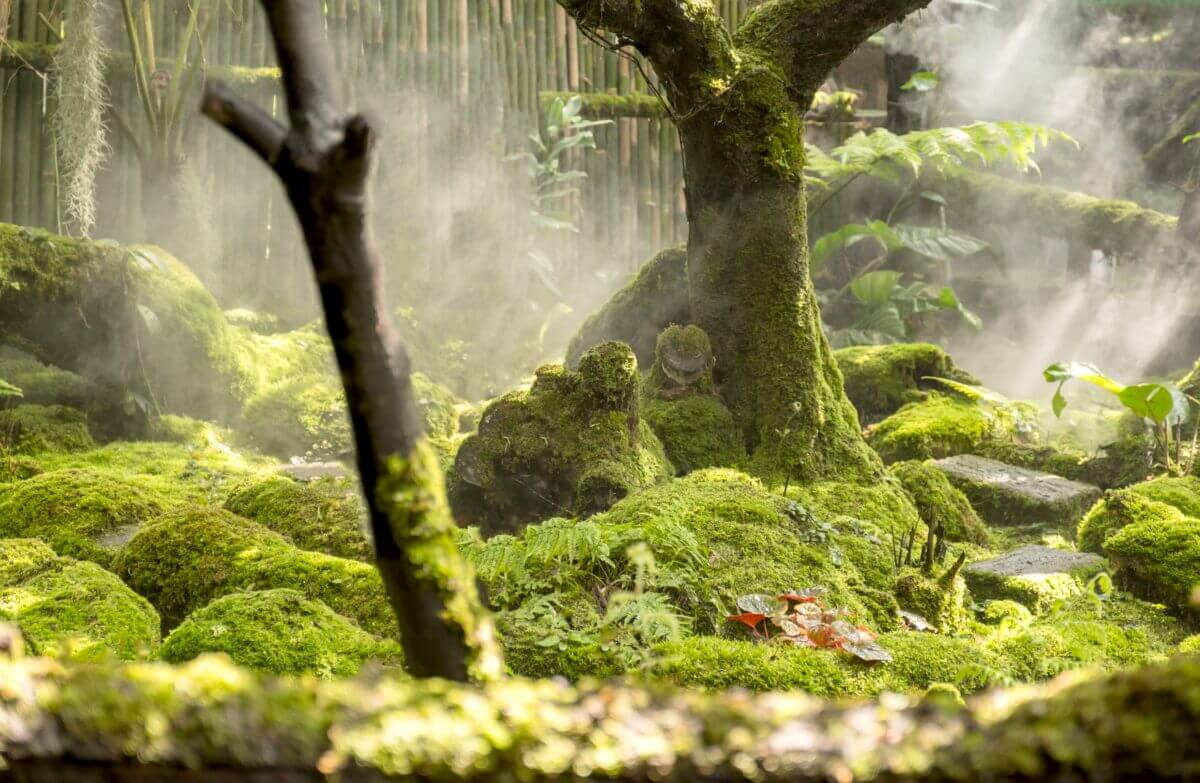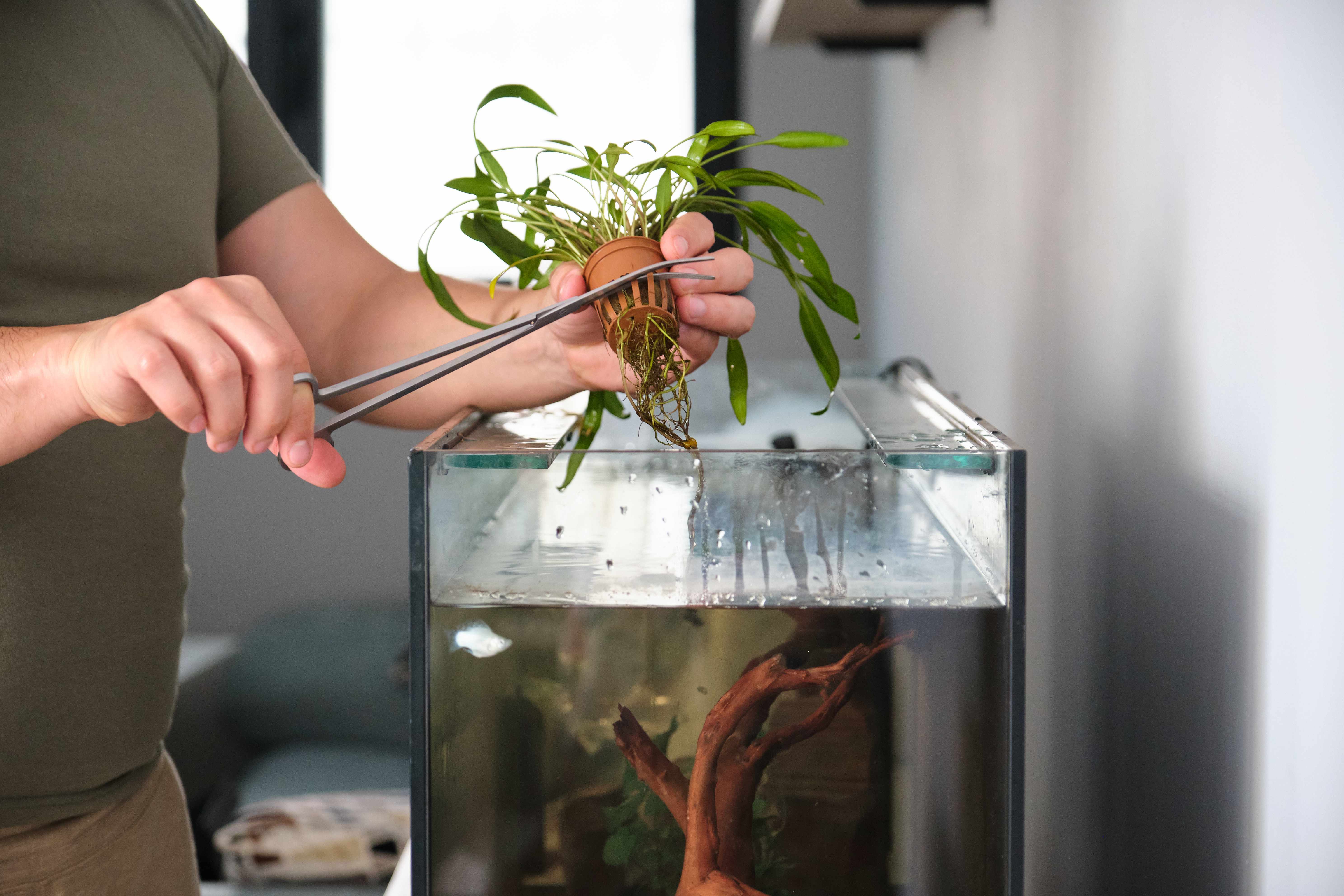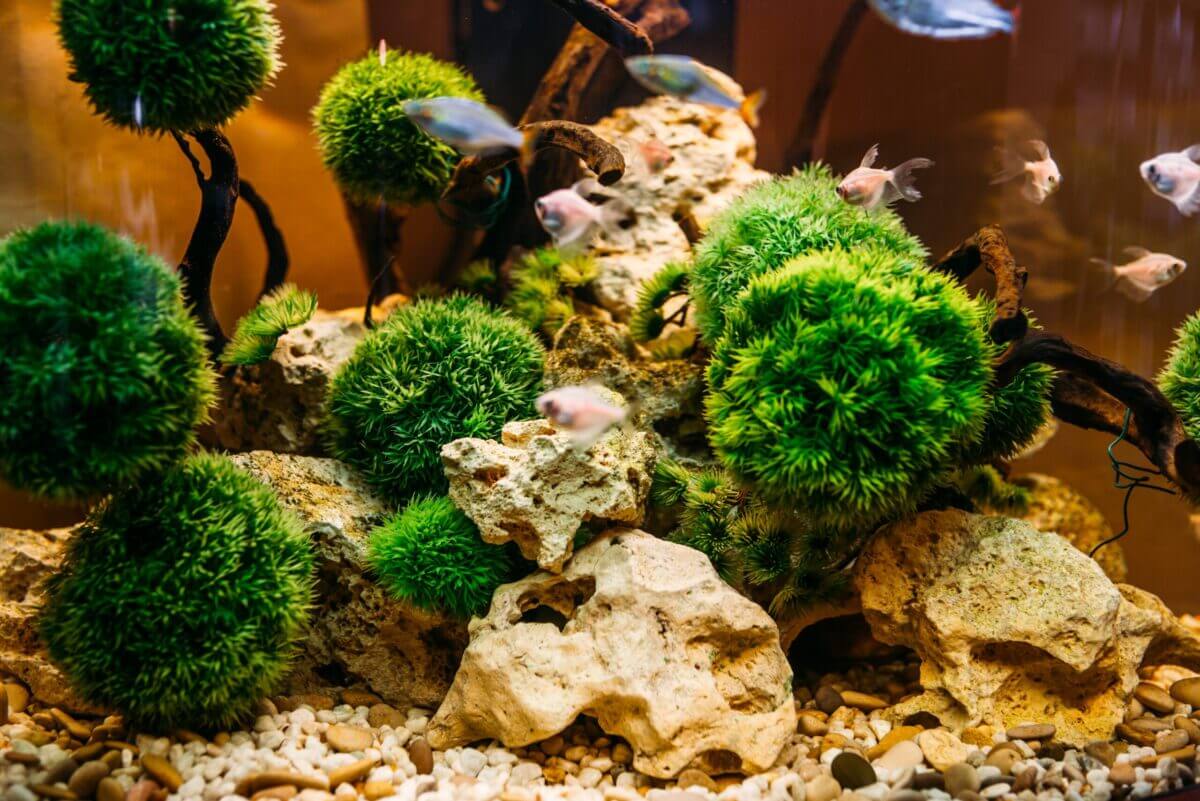Entities: Java Moss, Alexander von Humboldt, Southeast Asia, Indonesia, Taxiphyllum Barbieri, Bryopsida, freshwater aquariums, Dinosaur Bichir, Fluvico Team,1825, Cryptocoryne, Swiss plant biologist Dubyana, Amano shrimps, Southeast Asia, China, Thailand, Philippines, Sunda Islands, Djakarta, Swiss plant biologist Dubyana, Characidae, Taxiphyllum barbieri
.jpg)
Are you a fan of aquatic plants? Have you ever wondered about Java Moss’s lighting needs?
In this article, we will explore the importance of lighting for the growth of Java Moss, the ideal lighting conditions, the best type of light, and how to monitor and adjust lighting for optimal growth. We will also discuss the signs of insufficient and excessive light and how to address these issues.
Whether you are a beginner or an experienced aquarist, understanding the lighting requirements of Java Moss will help you maintain a healthy and thriving aquatic environment.
Key Takeaways:
Ensuring proper lighting is crucial for optimal growth of Java Moss. Java Moss thrives in low to moderate light conditions, with a recommended light spectrum and intensity. Monitoring and adjusting lighting is necessary to prevent under and overexposure, which can lead to stunted or algae growth.
What Is Java Moss?
.jpg)
Java Moss, scientifically known as Taxiphyllum Barbieri, is a versatile and resilient moss species from Southeast Asia, particularly in Indonesia. It belongs to the family Bryopsida and is a popular choice for freshwater aquariums due to its adaptability and aesthetic appeal, discovered by Alexander von Humboldt in 1825.
Its finely branched, bright green fronds create a lush and natural look in aquariums, providing excellent cover for fish fry and small aquatic creatures.
Java Moss thrives in various water conditions, making it well-suited for novice and experienced aquarists. Due to its low-maintenance nature, this moss species has become a staple for aquascaping, where it’s used to create stunning underwater landscapes. Its ability to attach to various surfaces, including rocks and driftwood, adds versatility and makes it a popular choice for aquarists looking to create visually appealing aquascapes.
Why Is Lighting Important for Java Moss Growth?
Lighting plays a crucial role in the growth and maintenance of Java Moss within aquariums, as it directly impacts the moss’s health, optimal light intensity, and the prevention of algae overgrowth. Achieving balanced tank lighting is essential for the overall well-being and sustained growth of Java Moss.
What Are the Ideal Lighting Conditions for Java Moss?
The ideal lighting conditions for Java Moss encompass low light requirements, making it suitable for placement in areas with indirect lighting. Understanding the optimal light duration and photoperiod for Java Moss is crucial, considering its specific adaptations as a low-light plant.
Being a low-light plant, Java Moss thrives in environments with minimal lighting. It prefers around 8-10 hours of light per day, making it essential to regulate its exposure to avoid potential stress.
A consistent photoperiod helps in maintaining its growth and resilience. Its adaptation to low light enables it to efficiently utilize available light energy, making it a suitable choice for shaded aquariums or terrariums. This plant’s ability to thrive in subdued light conditions is ideal for low-light environments.
What Type of Light is Best for Java Moss?
.jpg)
When considering lighting options for Java Moss, both fluorescent and LED lighting systems are viable, providing efficient illumination for its growth. The use of dimmable aquarium lights and automated light timers further enables precise adjustments to meet the specific lighting needs of Java Moss within the aquarium environment.
What Is the Recommended Light Spectrum for Java Moss?
The recommended light spectrum for Java Moss should align with its natural habitat and cater to its colouration requirements, typically favouring a balanced spectrum that promotes healthy growth and a vibrant appearance within the aquarium environment.
Java Moss thrives in low to moderate lighting conditions, making it crucial to provide a light spectrum that mimics its natural habitat.
An ideal spectrum consists of blue and red wavelengths, which not only enhance the green colouration of Java Moss but also support photosynthesis.
This balanced spectrum aids in maintaining a healthy aquatic environment by promoting the growth of beneficial microorganisms while minimizing the proliferation of algae.
Carefully selecting the light spectrum can contribute significantly to the aquarium’s overall well-being and visual appeal.
What Is the Ideal Intensity of Light for Java Moss?
The ideal light intensity for Java Moss should support its health and growth without causing undue stress or overstimulation, ensuring a balanced environment that fosters the moss’s well-being and sustained development.
Java Moss thrives in moderate to low light conditions, making it well-suited for aquariums or terrariums with subdued lighting.
Excessive light can lead to algae growth, while insufficient light may hinder photosynthesis and slow development.
A light intensity of 1.5-2 watts per gallon is often recommended for Java Moss, allowing it to flourish without being overwhelmed.
A consistent light cycle can improve the moss’s overall health and vitality.
How Long Should Java Moss Be Exposed to Light?
Determining the optimal duration for exposing Java Moss to light is crucial in managing algae growth, promoting sustainable Java Moss growth, and ensuring the overall health and vitality of the aquarium environment. Implementing adjustments to aquarium lighting can contribute to maintaining favourable light exposure for Java Moss.
For optimal results, it is recommended to expose Java Moss to light for approximately 8-10 hours daily. This duration provides sufficient light for photosynthesis, absorbing nutrients and carbon dioxide, essential for healthy growth.
Proper exposure to light can also help prevent excessive algae growth, as Java Moss competes with algae for nutrients and can inhibit their proliferation, creating a balanced aquatic ecosystem.
What Happens If Java Moss Does Not Get Enough Light?
Inadequate light for Java Moss can result in visible signs of distress, including stunted growth, uncharacteristic colouration, and increased susceptibility to algae infestations. Moreover, the moss’s compromised condition may also impact the interactions with tank mates.
What Are the Signs of Insufficient Light for Java Moss?
Signs of insufficient light for Java Moss may include diminished growth rates, pale or discoloured patches on the moss, and observable adaptations in its placement within the aquarium, indicating its response to suboptimal lighting conditions.
When Java Moss experiences inadequate light, its growth can become stunted, and the once vibrant green colour may fade, appearing pale or even discoloured. This can be a critical indicator that the moss is not receiving the required light.
The moss may demonstrate subtle behaviours such as clustering towards areas with better light exposure to maximize its intake of available light. Adapting to such conditions showcases the resilience of this versatile aquatic plant.
How Can You Increase Light for Java Moss?
Increasing light for Java Moss can be achieved by adjusting the aquarium lighting to provide a more balanced and optimal environment for the moss’s growth. This ensures it receives the necessary illumination to thrive and flourish within the aquatic habitat.
Adjusting the lighting intensity and duration can significantly impact Java Moss’s growth. Moderate to high lighting, around 2-3 watts per gallon, distributed evenly across the tank, can promote healthy and robust moss development.
Additionally, LED lights are a popular choice due to their energy efficiency and customizable spectrum options, which can be tailored to suit the specific needs of Java Moss. Monitoring the lighting duration, typically 8-10 hours per day, is crucial to prevent overexposure, which can lead to algae growth and hinder the moss’s health.
By maintaining a well-balanced and suitable lighting environment, Java Moss can thrive and contribute to the aquarium’s overall aesthetics and ecological balance.
What Happens If Java Moss Gets Too Much Light?
Excessive light exposure can harm Java Moss, leading to signs such as browning, increased susceptibility to algae overgrowth, and potential maintenance challenges in managing the moss’s health under such conditions.
What Are the Signs of Excessive Light for Java Moss?
Signs of excessive light for Java Moss may manifest as browning or bleaching of the moss, indicating potential stress from intense light intensity, which can adversely affect its colouration and overall health within the aquarium environment.
When Java Moss is exposed to excess light, its delicate fronds may display a noticeable discolouration, with some parts turning brown or even becoming pale. This clearly indicates that the moss is struggling to cope with the high levels of light.
Plus, colour changes, the moss may also exhibit signs of stress such as reduced growth, weakened structure, and overall diminished vibrancy.
How Can You Decrease Light for Java Moss?
Balancing light exposure for Java Moss involves utilizing dimmable aquarium lights and automated light timers to regulate and decrease illumination intensity, ensuring that the moss is not unduly stressed by excessive light within the aquarium habitat.
Dimmable aquarium lights offer a versatile solution to cater to the specific light requirements of Java Moss. Adjusting the brightness can create an optimal environment for the moss to thrive.
Pairing these lights with automated timers allows for precise scheduling, ensuring a consistent photoperiod without excessive exposure. Consider gradually adjusting the lighting over time to acclimate the Java Moss to changes in intensity, thereby promoting healthy growth and maintaining the aesthetic appeal of your aquarium.
How do you monitor and adjust lighting for optimal Java Moss growth?
Achieving optimal growth for Java Moss necessitates the implementation of automated light timers and vigilant monitoring to adjust aquarium lighting, ensuring that the moss’s health is upheld through the provision of suitable light requirements within the aquatic environment. https://www.youtube.com/embed/peTChx_I5Zo
Frequently Asked Questions
What are Java Moss Lighting Requirements, and why is it essential for optimal growth?
Java Moss Lighting Requirements refer to the specific amount and type of light needed for Java Moss to grow and thrive. This is important because insufficient or improper lighting can lead to stunted growth or even plant death.
What type of lighting is best for Java Moss?
Java Moss grows best under moderate to high lighting levels, specifically in the range of 2-3 watts per gallon. It also prefers full spectrum lighting, such as LED or fluorescent lights, rather than incandescent bulbs.
Can I use natural sunlight for my Java Moss?
While natural sunlight can be used, it is not recommended as it can cause excessive algae growth, and fluctuating light levels can harm the plant. If using natural light, it’s best to provide some shade or use a timer to regulate the amount of light received.
How long should I leave the lights on for my Java Moss?
Java Moss requires a consistent light cycle of 8-10 hours daily. It’s important not to leave the lights on for longer than this as it can disrupt the plant’s growth and natural resting period.
What are the signs of inadequate lighting for Java Moss?
If Java Moss is not receiving enough light, it may appear brown or yellow, have stunted growth, or start to disintegrate. These are all signs that the lighting may need to be adjusted.
Can I use artificial lighting for my Java Moss?
Yes, artificial lighting can be used for Java Moss if it meets the required intensity and spectrum. It’s essential to check regularly and, if necessary, adjust the lighting to ensure optimal growth for the plant.




